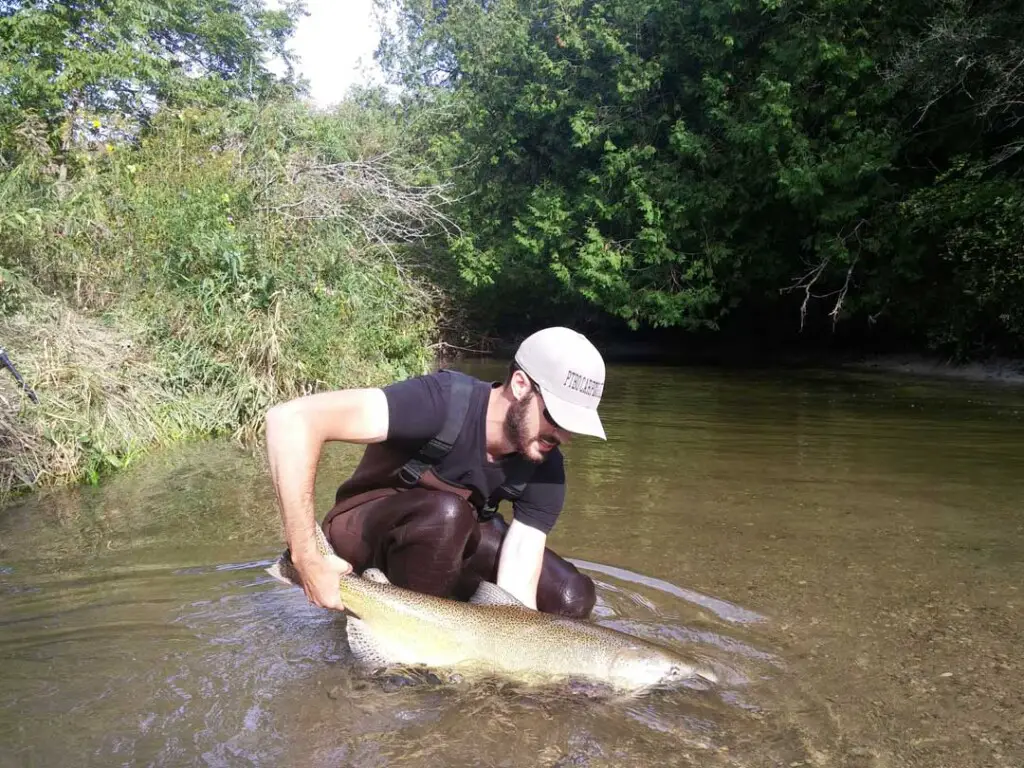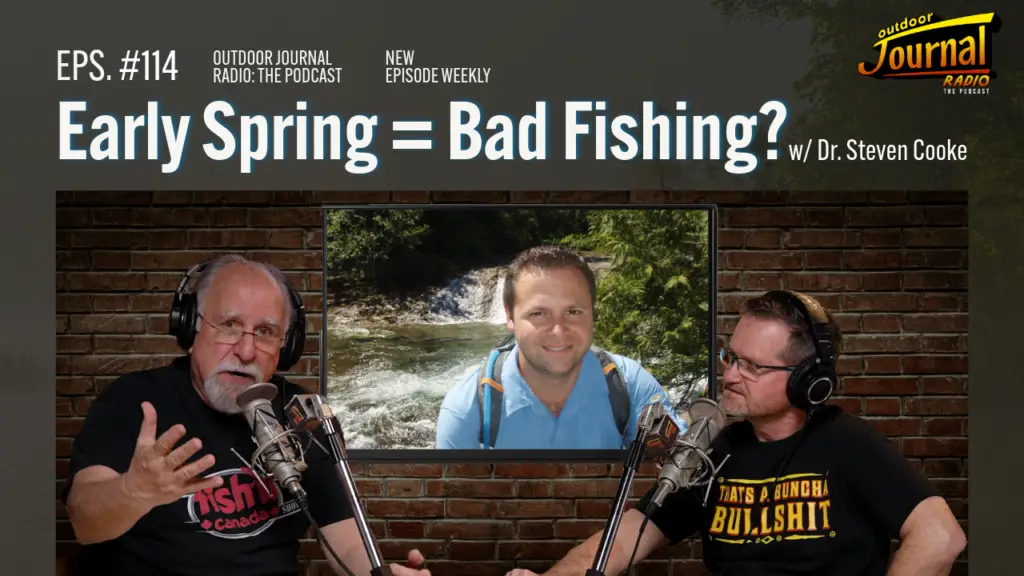Going back to earlier this year I remember stumbling upon a Facebook post from a fellow angler. This post simply read something along the lines of “44% Mortality… Disgusting.” Of course, I was morbidly curious as to what exactly my friend was on about. What I came to read horrified me, a fishing tournament held on the mighty St. Lawrence River, reported that 44% of the fish caught during the tournament perished. I was mortified to read such a chilling statistic, to think that just shy of half of those fish that were landed that day died of which 96% were Smallmouth.
As both an avid angler and avid conservationist, I feel that professional tournaments are not necessarily a negative aspect of fishing. However, I think it goes without saying that reading such a report would make the blood of most avid anglers and conservationists boil. In saying all of this, I was recently informed that the above tournament organization had just held an experimental event utilizing a new system of weighing, that was said to be ground-breaking for Canadian Bass tournament angling. If it is anything like the MLF’s means of weighing fish with a marshal on each boat, then I am sure it was successful. When I compare all tournament angling in Canada to that of say Europe, I am astounded by the fish care practiced by the WCC (World Carp Classic).
At the WCC, the fish are caught, placed in retention slings in the water, from which they came out of, weighed, photographed (if necessary) and released. Year after year, European carp are re-caught and are observed growing and contributing back to the fishery through the successful spawn. This whole situation to me was a real eye-opener and motivated the writing of this piece. So, sit back and enjoy a coffee-fuelled rant about fish care that many of you North Americans need to hear!
THE IMPORTANCE OF FISH CARE
Let me give you a brief synopsis of my view of where angling has gone since I began… Experiences stored into the ole memory bank of times shared with family and friends, to stroking one’s ego through sharing posts of fish with wide-angle lenses and fully extended arms to get that next 10% off sponsorship for a pair of sunglasses or a pack of jigs. It’s not necessarily wrong, and I will admit to sharing pictures on social media regularly of my catches and experiences, as I feel social media should be flooded with positive experiences more so that negative ones. However, one thing I don’t disregard is fish care. I remember the old rule of thumb; hold your breath once you take that fish out of the water… (unless you’re a navy seal, then perhaps count to fifteen Mississippi) once you need to take a breath, that fish needs to go back in the water. This is only true of course for fish that you intend to live release, otherwise kill the fish you intend to keep as soon and as ethically as possible, as the transportation of live fish across land is illegal.
Though with my main target species, I do not necessarily need to abide by this same rule of thumb; as carp are far hardier than say a muskellunge. I am still conscious of the amount of time I keep the fish out of the water, and how I protect the well being of that fish from the moment it leaves the water, to the moment of release. So, let’s talk about fish care and how we as North American anglers can help better preserve our most valued resource.
LANDING/UNHOOKING MATS
One of the most important things that I think could help maintain a lower catch mortality rate for all anglers is a landing mat. Too often I have stumbled upon anglers that drag their fish up the shoreline, completely covering their fish in dirt and likely tearing off scales. This not only makes for unappealing photos but additionally it is one major factor towards fish mortality. Notice how fish are slimy? Yeah… they kind of need to stay that way and those scales need to be preserved as well. So, this takes me back to the landing mat. Whether your fish is less than a pound or over a hundred, landing mats are second best to unhooking and releasing the fish directly in the water.
In Europe, especially in the UK, inland fisheries are for the most part privately owned, and thus it’s not only in the interests of the anglers that frequent these waters, but also the interest of the owners to preserve the populations of fish in these waters. In fact, on most of these lakes, you will not be allowed access to fish the waters without adequate fish care, which at the top of this list is a net and landing mat. A landing mat (see one in use at 10:21 of this video) is a nylon covered foam pad that is light, portable and a proven means of protecting fish whether in a boat or on land. These can be purchased on Amazon, Wish, Carpkit.com and the list goes on.
Essentially, if you are landing fish of any size allowing them to flop around on a hard surface getting covered in dirt and debris then consider how much unnecessary stress and injury that causes a fish that you claim to love pursuing. Be mindful and consider purchasing a landing/unhooking mat.
WEIGH SLINGS
Now this one comes from seeing pictures of “two mouthed fish” or in other words a mishandled specimen that had a Boga Grip or weigh hook rammed into its mouth/gill plate and subsequently tore under the fish’s weight. I remember also witnessing a weigh-in at a local tournament where a fish flopped out of a crude Rubbermaid bin laid on a scale and landed headfirst onto the hard concrete below. This prompted a brief conversation that I had with the organizers about fish slings that I had seen utilized in my carp fishing for weighing carp. A weigh sling is exactly as you might visualize it, a big fish-friendly nylon bag that folds in half with two strong aluminum bars and a set of nylon handles from which you can suspend the entire apparatus on a weigh hook. Simple, but once again brilliant. When I showed this to that local tournament organizers, I was surprised to find that a few of them were really interested and/or had never thought of such an idea. It can be as simple as a recycled reusable plastic shopping bag or weighing your catch in the net and subtracting the net weight… just keep those scales off the fish!
BE MINDFUL OF WHERE YOU ARE FISHING
Fishing warm water for temperature-sensitive fish?
Fishing rocky shorelines with little to no flat ground to safely land a fish?
Fishing deep waters?
These questions should be in the minds of all anglers when approaching a venue. I really applaud my friend John who when fishing the Niagara Whirlpool for Lake Trout. For those who have fished the whirlpool, you know all too well of its at times hellish terrain but yields incredible fish. John was pursuing Lake Trout in a video that he was shooting for his The Angler Files YouTube page, and brought with him his basket net and landing mat. Upon catching a lovely Laker, John netted the fish and gently laid it upon his landing/unhooking mat. This was the first time I had seen a Canadian angler utilizing a landing mat for a fish other than carp and I was elated. Even more so, I was ecstatic to see a YouTuber comment “What is that mat thing?”, and see a conversation about fish care initiate. I give big ups to John, and the mindfulness of his location and maintaining safety for his capture which he released successfully afterward.
Being mindful of water temperature as well is key to maintaining a low fish mortality rate. The warmer the water, the more stress on the fish. For example, a muskellunge landed in water above the low to mid seventy degrees Fahrenheit (mid 20’s Celsius) will have an incredibly difficult time and a prolonged recovery compared to a fish caught in cooler conditions. Also keep in mind, that although a fish may seemingly take off without hesitation at first, it could very well coast out of view and succumb to the trauma of a prolonged fight, and/or inadequate resuscitation.
Another massive cause of fish mortality is barotrauma (see this “entertaining video” to explain). Quite simply put, the bends aren’t just an ailment that harms humans, it can also kill fish. Some species are far less susceptible to the effects of pressure change, whereas others are incredibly sensitive. It is important to know that when fishing in deep waters, that when fish are caught a long way down, they come up a lot more quickly than they would naturally. This results in barotrauma, and thus, one must be mindful as to whether it is worth a fish’s life trying to stroke one’s ego to catch it. If it’s extremely hot out and you barely want to be on the top side of the water… neither do they. However, if you are skilled in the art of “fizzing” it has been shown that this method can help a fish to bleed excessive air in its swim bladder before releasing.
Check out this YouTube video on fizzing. Though it is often debated on its effectiveness, such greats as Gord Pyzer have noted in his own video about Fish Care, that fizzing has made a difference in fish like Walleye and Smallmouth that were caught deep and then transported to a livewell. All in all, just take that second before you cast to establish a plan for the safe reintroduction of that fish into the water from whence it came!
FISH HANDLING
We have all seen it, and we have all seen the flack on social media, and although it can scare the bejeebus out of a newer/ignorant angler, it is important that some basic principles are followed for all fish. The biggest of these being avoid holding your fish vertically. Think about it, do fish swim upright? No. So why present them as such to the camera? I always hold my fish as horizontally as I possibly can, so’s to avoid causing damage to the mouth or gills of a fish.
When handling bass be mindful of the angle at which that bottom jaw is being held, too often anglers literally break bass jaws trying to get that perfect “bucket mouth shot”, without even being aware of how much damage they are doing. When possible, avoid holding a fish exclusively from its gill plate (if you must hold a fish by its gill plate at all!), rather support the weight of the fish in the other hand thus naturally promoting a horizontal hold. When it comes to carp, I never place my fingers in their gills as their gills are incredibly soft and sensitive, one slip of the finger could result in a bloody mess… literally!
Another example is supporting a rainbow trout or salmon under the pectoral fins whilst gripping the tail. This is a much safer method for handling the fish, rather than allowing a 30 lb Chinook to dangle from its gill plate… which naturally isn’t built to support such weight! Also… what’s with gripping pike by the eyes? Like… what? Knock that off! Finally, touching back on what was mentioned in the previous paragraphs, hold the fish closer to the ground because a fall for a fish onto the solid ground is incredibly traumatic and as the old saying goes, “the bigger they are the harder they fall.”
FINAL THOUGHTS
All in all, I think it is important that we are all advocates for this sport, and for the conservation of our most valued resource. For those of us who are catch and release anglers, I think we need to be mindful of our practice and ensure that we significantly lower fish mortality by practicing proper fish care. Talk to the coordinators of your small-town fishing derbies, get them on board with more ethical means of weighing/measuring fish.
If funds aren’t available to compensate for your time, then volunteer your time, because at the end of the day it shouldn’t be about the money anyway. Let’s look at the bigger picture and imagine the fishery we will leave for future generations. Indigenous peoples of North America have a belief known as the seventh-generation principle. Essentially, be mindful of the impact of your actions today, and consider the world you will leave your descendants two hundred years from now.








One Response
Thanks for posting this valuable information.